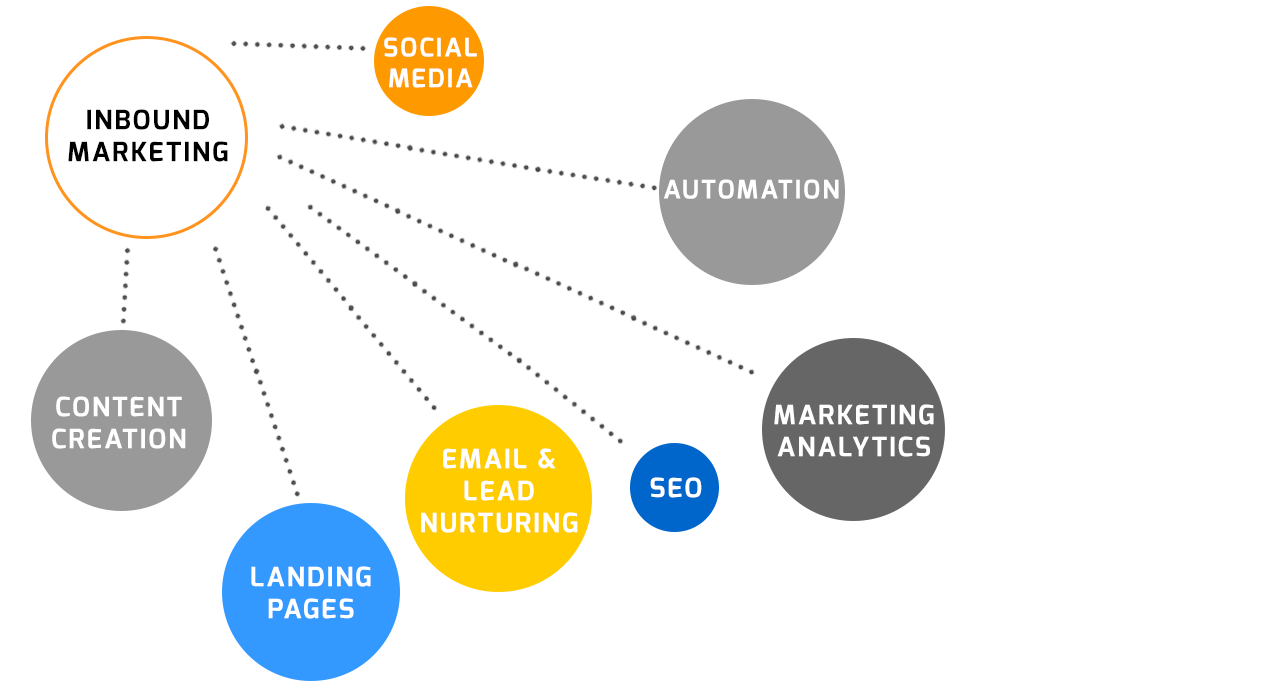How to Get Started with Inbound Marketing

Traditionally, “marketing” is used to refer to outbound marketing, such as television commercials, mailings, cold calls, and billboard ads. This kind of marketing requires substantial money and time distributing your message to a broad, loosely defined audience, among whom very few individuals are likely to be interested in your business and with no real way to measure results. Luckily, current consumer behavior and the capabilities of current technology make it nearly obsolete to depend solely on outbound marketing.
Depending on your goals, inbound marketing can make more sense because it can be more cost-effective and can target a more specific and relevant audience. The goal is to generate leads and ultimately clients by attracting visitors to your website. To put together an effective inbound marketing campaign, you must consider the components you will include, the strategies you will use, and how you will assess its effectiveness.
Establish Yourself as an Authority in the Field
The premise of an inbound marketing campaign is that visitors come to your website because of some sort of an attraction. Often, the attraction is the pursuit of useful information. You can establish your company as a source of credible information by publishing pieces such as white papers and resource libraries, and by maintaining a blog or podcast on your site. The more truly helpful content you produce, the more people will turn to you to find the information that they need.
Do Not Underestimate SEO
Since search engine optimization (SEO) is a major factor in whether people come across your website, it is an indispensable consideration when developing and implementing your inbound marketing campaign. The following tips may help you improve your business’ SEO.
- Regularly update your site content, such as with a blog.
- Use keywords that are common in your industry and relevant to the type of business you're trying to attract.
- Make each web page unique and relevant.
- Use meta-description tags to persuade searchers to click on your site from the search engine results.
- Increase your backlinks by providing guest blog posts on industry-related blogs.
Convert Leads to Customers
Drawing visitors to your site is only one part of inbound marketing. Your ultimate business goal is to make the sale. Your campaign is only a success if you are able to convert your visitors to leads and your leads to customers. Make sure that your website is working and that it is laid out in a way that makes sense to viewers.
Things that should be taken into consideration to get conversions:
- CTA design and placement
- Landing page design and content
- Marketing automation
- The online sales funnel
Monitor Your Campaign
Assess your campaign to be able to improve it and to design even better marketing strategies in the future. It is imperative that you track the money that you spend on each portion of your campaign, such as maintaining a blog or building your website. At the same time, track the following items.
- How many leads come from each source, such as your facebook page or a search engine result that lists your website.
- What percent of leads are converted to sales, and which sources are most likely to generate leads that are converted to customers.
- The role of social media in generated leads.
- Which blog posts are performing well
- Which landing pages get the most visitors and submissions
These can seem complicated to track and analyze, but data analytics software designed specifically for this purpose, such as HubSpot or Google Analytics can help. Compare the costs of each component of your campaign and their benefits to determine whether they are worthwhile.
An inbound marketing campaign can bring in plenty of business if you plan and execute it well. Include a variety of components while keeping your messages attractive and cohesive, and you can succeed with your marketing.

July 2, 2014